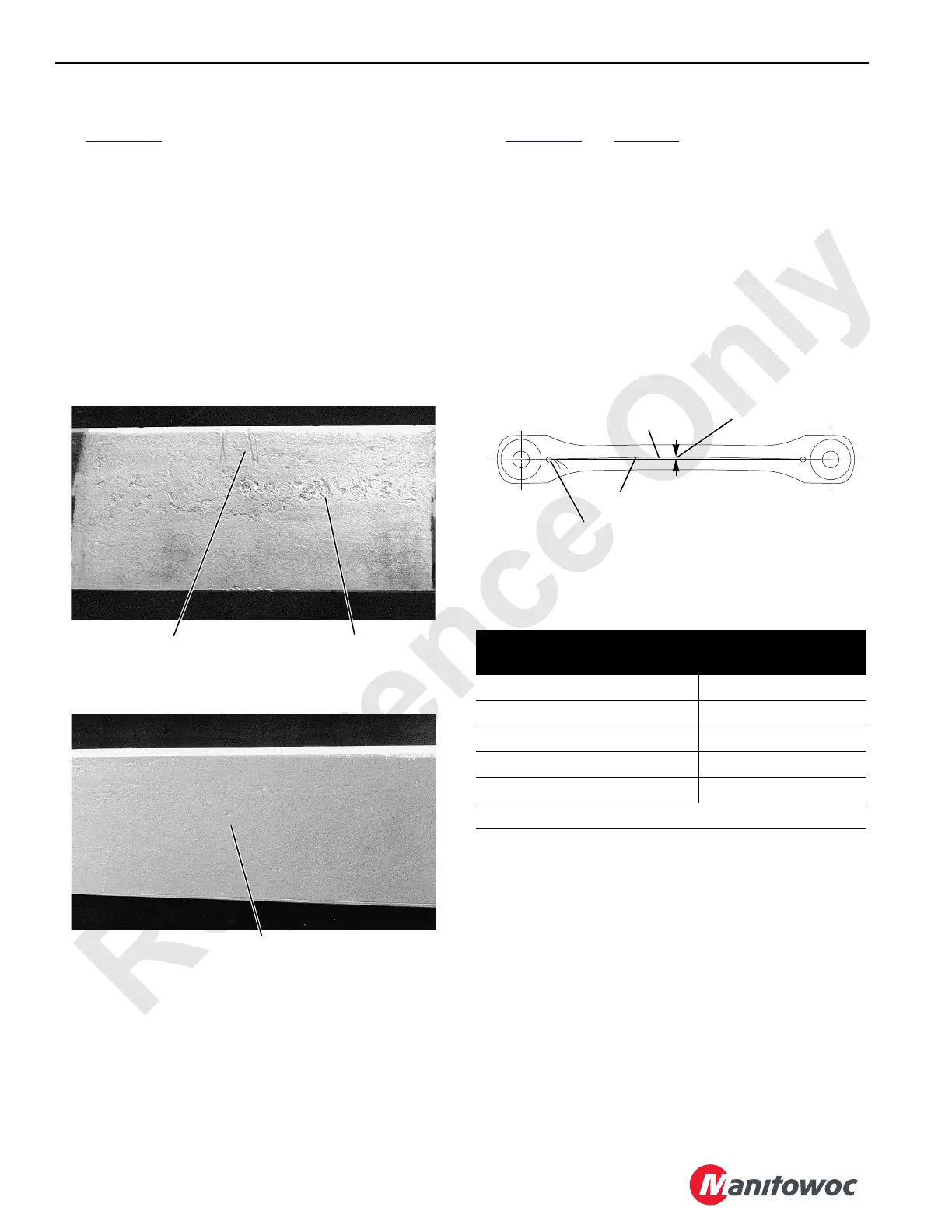BOOM 2250 SERVICE/MAINTENANCE MANUAL
4-18
Published 07-19-16, Control # 249-01
Corrosion or Abrasion
See Figure 4-15 for the following procedure.
1. Sandblast to remove the corrosion. Do not grind!
2. Determine the reduction in thickness.
3. If the reduction in thickness is less than 6% of strap
thickness, clearly mark the damaged areas with brightly
colored tape for quick identification by repair workers.
Paint the strap to maintain a continuous protective
coating.
4. If the reduction in thickness is 6% or more of the strap
thickness, remove the strap from service.
Straightness
See Figure 4-16 and Table 4-3 for the following procedure.
1. Stretch a line (string or wire) from the pin storage hole at
one end of the strap.
2. Stretch the line as tight as possible and tie it off at the
other pin storage hole.
3. Mark the strap centerline, but do not use a center punch.
4. If the string does not align with the centerline, measure
the distance from the centerline to stretched line.
5. If the deviation from being straight is greater than the
maximum allowed, remove the strap from service.
Table 4-3. Strap Straightness Deviations
Not Acceptable
Abrasion from handling with
a chain exceeds the
allowable limit.
Acceptable
The surface is relatively smooth and within the allowable limit.
Not Acceptable
The surface is badly pitted,
which exceeds the
allowable limit.
P325
P326
Corrosion or Abrasion
FIGURE 4-15
Strap Length
Maximum Deviation
Allowed
1,5 to <3,0 m (5 to <10 ft) 1,5 mm (0.060 in)
3,0 to <6,1 m (10 to <20 ft) 3,2 mm (0.125 in)
6,1 to <9,1 m (20 to <30 ft) 6,4 mm (0.250 in)
9,1 to <12,0 m (30 to <40 ft) 9,5 mm (0.375 in)
12,0 to <15,0 m (40 to <50 ft) 12,7 mm (0.50 in)
< = less than
Pin Storage
Hole (typical)
Centerline
String
Deviation
from Straight
A1086
Straightness (gradual
or sweeping bend)
FIGURE 4-16
